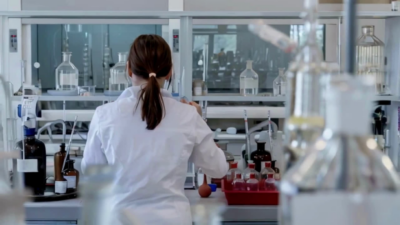- Cambridge is the global leader in life science R&D.
- Life science companies are well capitalized thanks to strong VC funding (record $5.5 billion allocation to biopharma in Q1), NIH funding ($3 billion in Massachusetts), and strong IPO activity (five MA-based firms have gone public in 2020).
- 3 million SF of active tenants originate from Cambridge – 20% of them are looking in the suburbs and Boston, 40% are Series A.
- Suburban absorption has been lab-driven: 31% in 2018, 58% in 2019, and 52% YTD.
- Rents have held.
- The development pipeline is full, but projects will be delayed due to market uncertainty. Those underway are well leased
- Investors are still clamoring for life science product – it is the highest and best use of land value.
It’s no secret that Greater Boston, and Cambridge specifically, is the global leader in life science R&D. We are on the front line of the battle with COVID-19, with tremendous talent, capital, and time devoted to finding a vaccine. This effort will likely lead to future scientific and medical breakthroughs. This engine should keep running strong because the life science industry is well capitalized, and it looks to remain that way for the foreseeable future.
Cambridge has been and continues to be an enormous demand driver, both in and outside its borders. Today there are 6.3 million SF of active tenants with a Cambridge address. These groups are mainly focused on staying in Cambridge, but about 20% of that demand is looking elsewhere. Overall, 40% of these tenants are Series A companies in expansion mode. That is driving new clusters and the expansion of existing clusters in Boston and the suburbs alike. Brammer Bio (now part of Thermo Fisher Scientific) has just announced plans for a 290,000 SF production facility in Plainville, emphasizing this point.

In fact, the suburban market has been driven by life science companies. Lab space drove 31% of absorption in 2018, 58% in 2019, and 52% in the first quarter of this year. Strong investor interest in markets such as Watertown is setting up the market for continued growth. Conversions are moving forward, while the supply pipeline has swelled. Given the uncertainty in the market today, many of these projects will be put on hold – at least temporarily – keeping the market from being saturated with space. Lab has been and remains the highest and best use for land, and more recently, for existing buildings.

As noted in our sublease post, we are seeing a widening bid-ask spread on office rents – but that is not the case in the lab market. Rents have held. The availability of space is low, especially in Cambridge, and projects underway are well-leased or still several quarters (or more) away from completion. Life science companies are well capitalized, as venture capital investment and IPOs have hit record highs in recent years. In fact, year-to-date venture capital investment to Massachusetts biotech companies is $2.7 billion, per data from Crunchbase. April and May have brought in $1.2 billion – largely supported by Moderna’s $483 million grant to continue its investigation into a vaccine for COVID-19. That capital looks to remain available. ARCH Venture Partners and Flagship Pioneering, to name just two, have recently announced a combined $2.56 billion in recent capital raises. First quarter VC funding ($5.5 billion) to biopharma was the highest on record, per Pitchbook.
Massachusetts remains a hotbed of NIH funding as well. Boston has been the national leader in NIH funding every year for more than two decades straight. In the latest fiscal year (2019), Boston companies received more than $2.1 billion of funding, while the state as a whole topped $3 billion. These two sources of outside investment continue to create companies, push scientific breakthroughs, and support the strength of the life science market.
With a strong VC and NIH funding base, IPOs have been active. Biotech firms have been one of the few groups to successfully IPO this year, making up about 25% of deals per KPMG and Dealogic. Locally, a number of groups have gone public year-to-date, including Lyra Therapeutics, Keros Therapeutics, imara, Beam Therapeutics, and Black Diamond Therapeutics. Schrödinger, who also went public, has an office in Cambridge.


 Aaron Jodka
Aaron Jodka
 Steig Seaward
Steig Seaward